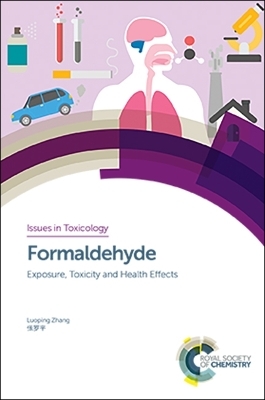
Formaldehyde
Royal Society of Chemistry (Verlag)
978-1-78262-973-3 (ISBN)
Formaldehyde is virtually ubiquitous in the modern environment due to its cost-effective nature, its use in resin formation, and its preservative properties. Though formaldehyde is necessary for many products and processes important to the world’s economy, this economic dependence on formaldehyde comes at a cost to public health.
Growth and consequent industrialization rely heavily on formaldehyde use. New buildings—residences, public places, and offices—are not only built with timber preserved by formaldehyde, but they are also furnished with wood, wool, and textile products that contain formaldehyde. The general population faces environmental exposure from indoor and outdoor air pollution, food, and even medicine. Scientific inquiry into formaldehyde exposure has grown in response.
This book consolidates the new and established body of formaldehyde research in the scholarly community, focusing on exposure, genotoxicity, and adverse health outcomes. Through this resource, we hope to increase awareness of the broad range of health effects posed by formaldehyde exposure, and to encourage interdisciplinary interest, as well as research, into this pervasive compound—especially in the United States and China, where formaldehyde production and usage is high. This book will be useful to researchers of environmental and occupational exposure, students, and government regulators and anyone exposed to formaldehyde in the workplace and/or at home.
For the past two decades, my research has focused on understanding the molecular mechanisms of bone marrow toxicity caused by benzene and other toxic chemicals, including butadiene, formaldehyde, tricholoroethylene, and arsenic. Our investigations have mainly involved the detection of biomarkers associated with these chemical exposures in molecular epidemiological studies. We investigated specific chromosomal aneuploidies and rearrangements in many of these studies, as well as in mature and progenitor human cells by a molecular cytogenetic method named FISH (fluorescence in situ hybridization). To identify additional novel biomarkers and disease-related mechanisms associated with these chemical exposures, we have developed and continue to employ many high-throughput technologies, such as single-cell genetic analysis (SCGA), advanced omic-based methodologies, next-generation sequencing (NGS), RNAi (RNA interference), and, most recently, CRISPR-Cas9. Besides my long-term involvement and contributions to the Northern California Childhood Leukemia Study (NCCLS), I have been a co-project leader and/or co-principal investigator in the Center for Interdisciplinary Research on Childhood Leukemia and the Environment (CIRCLE), the Superfund Basic Research Program (SBRP), and the Center for Exposure Biology (CEB) at Berkeley.
Introduction to Formaldehyde;
Formaldehyde Exposure, Regulation, and Metabolism;
Formaldehyde Exposure in China;
General Toxicity of Formaldehyde;
Formaldehyde Carcinogenesis;
Formaldehyde Exposure and Leukemia Risk;
Potential Mechanisms of Formaldehyde-Induced Leukemia;
Formaldehyde Induced Leukemia-Specific Chromosomal Aneuploidy;
Formaldehyde-Associated Brain Tumors;
Formaldehyde-Associated Neurodegenerative Diseases;
Formaldehyde Toxicity in Children;
Reproductive and Developmental Toxicity of Formaldehyde Exposure in Humans;
Reproductive and Developmental Toxicity of Formaldehyde Exposure in Animals;
Mechanisms of Action for Formaldehyde-Induced Reproductive and Developmental Toxicity;
Conclusions and Future Directions
| Erscheinungsdatum | 30.07.2018 |
|---|---|
| Reihe/Serie | Issues in Toxicology ; Volume 37 |
| Verlagsort | Cambridge |
| Sprache | englisch |
| Maße | 156 x 234 mm |
| Gewicht | 772 g |
| Themenwelt | Studium ► 2. Studienabschnitt (Klinik) ► Pharmakologie / Toxikologie |
| Studium ► Querschnittsbereiche ► Prävention / Gesundheitsförderung | |
| Naturwissenschaften ► Biologie ► Biochemie | |
| Naturwissenschaften ► Chemie ► Organische Chemie | |
| ISBN-10 | 1-78262-973-4 / 1782629734 |
| ISBN-13 | 978-1-78262-973-3 / 9781782629733 |
| Zustand | Neuware |
| Haben Sie eine Frage zum Produkt? |
aus dem Bereich


